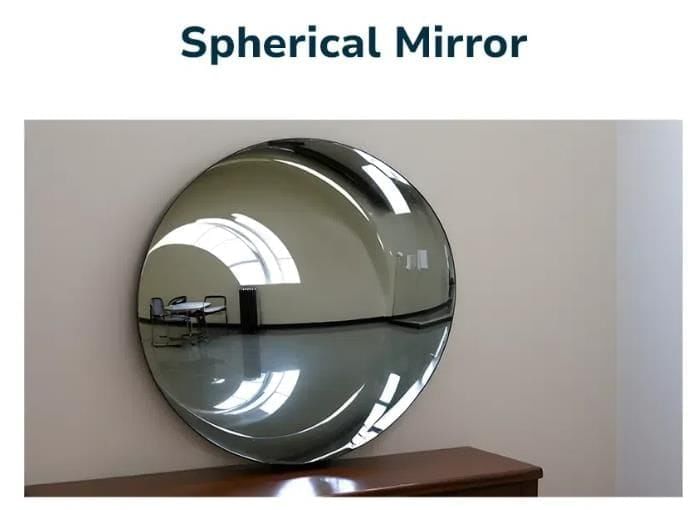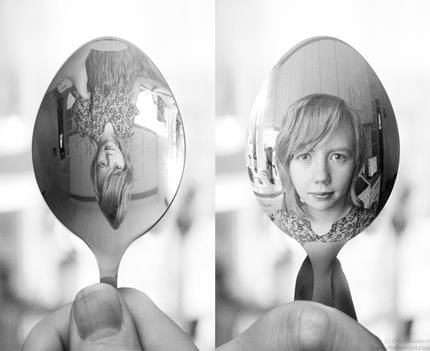Unit Test: Light: Mirrors and Lenses | Science Curiosity Class 8 - New NCERT PDF Download
Time: 1 hour
M.M. 30
Attempt all questions.
- Question numbers 1 to 5 carry 1 mark each.
- Question numbers 6 to 8 carry 2 marks each.
- Question numbers 9 to 11 carry 3 marks each.
- Question numbers 12 & 13 carry 5 marks each.
- 1-mark questions include MCQs.
Q1: A mirror with reflecting surface curved inward is called (1 Mark)
(i) plane mirror
(ii) convex mirror
(iii) concave mirror
(iv) cylindrical mirror

Q2: Which mirror is used as a vehicle’s side-view mirror and why? (1 Mark)
(i) Concave, to magnify the view
(ii) Plane, to show true size
(iii) Convex, to give a wider field of view
(iv) Concave, to converge light
Q3: The law of reflection states that the angle of incidence is (1 Mark)
(i) greater than angle of reflection
(ii) equal to angle of reflection
(iii) less than angle of reflection
(iv) independent of angle of reflection
Q4: A convex lens is also called a (1 Mark)
(i) diverging lens
(ii) converging lens
(iii) cylindrical lens
(iv) neutral lens
Q5: The image in a convex mirror is always (1 Mark)
(i) inverted and enlarged
(ii) erect and same size
(iii) erect and diminished
(iv) inverted and diminished
Q6: Distinguish between concave and convex mirrors on the basis of image nature for close objects. (2 Marks)
Q7: State the two laws of reflection and name the three rays/lines used to describe them. (2 Marks)
Q8: A comb-and-torch setup produces multiple parallel light beams onto (a) plane mirror (b) concave mirror (c) convex mirror. Describe the reflected beams in each case. (2 Marks)
Q9: A student observes her face in a shiny spoon. Explain the difference between images seen in the inner and outer surfaces and identify the mirror type mimicked by each surface. (3 Marks)
 Q10: Explain why a concave mirror (or convex lens) can ignite paper when used in sunlight, while a plane mirror cannot. (3 Marks)
Q10: Explain why a concave mirror (or convex lens) can ignite paper when used in sunlight, while a plane mirror cannot. (3 Marks)
Q11: State how objects appear through (a) a convex lens and (b) a concave lens as the object distance increases from the lens. (3 Marks)
Q12: Laws of reflection — application. (5 Marks)
(a) A light ray strikes a plane mirror with angle of incidence 40°. What is the angle the reflected ray makes with the mirror surface? Show reasoning.
(b) In three cases, a ray
(i) falls along the normal,
(ii) the mirror is tilted but the ray still falls along that new normal,
(iii) the ray makes 20° with the normal. For each, state the angle of reflection and the direction of the reflected ray relative to the mirror.
(c) State and justify the “same plane” law using the bent-chart experiment.
Q13: (a) A woman walks toward a large convex mirror in a museum. Describe how her image appears as she approaches.
(b) A magnifying glass is held above text. What kind of lens is it and what happens as you increase the distance from the page?
(c) Match the following mirror/lens with the image property and use:
(i) Concave mirror,
(ii) Convex mirror,
(iii) Convex lens,
(iv) Concave lens — with:
(A) dentist’s mirror/enlarged close-up,
(B) vehicle side mirror/wide view,
(C) magnifier/enlarged close object,
(D) always erect diminished view. (5 Marks)
|
59 videos|236 docs|13 tests
|
FAQs on Unit Test: Light: Mirrors and Lenses - Science Curiosity Class 8 - New NCERT
| 1. What are the basic differences between concave and convex mirrors? |  |
| 2. How do lenses work in terms of light refraction? |  |
| 3. What is the significance of the focal length in mirrors and lenses? |  |
| 4. Can you explain the laws of reflection and refraction? |  |
| 5. What are some practical applications of mirrors and lenses in daily life? |  |





















